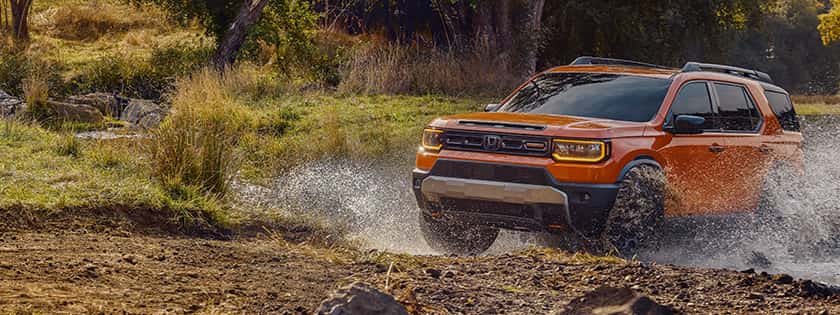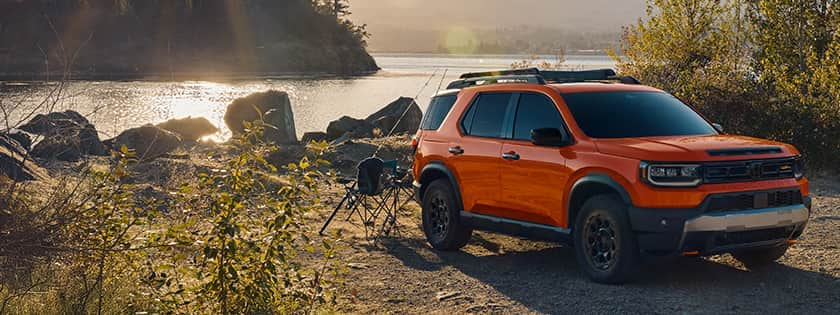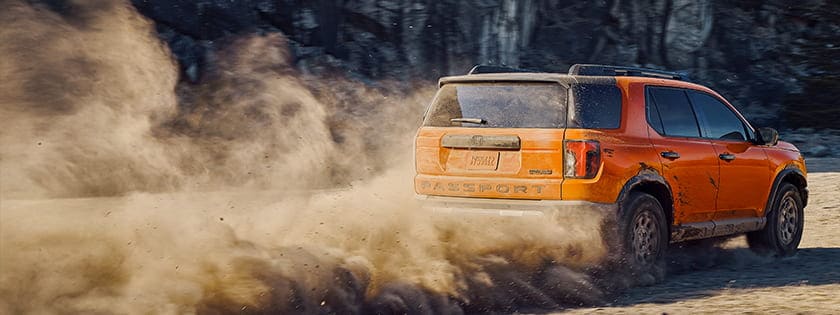
Our 2011 Mazda 2 has proven to be entertaining to drive in a small car sort of way, even though the suspension itself is fairly standard, as we'll soon see.
The key to Zoom Zoom is how the inevitable tradeoffs are managed? Is ride more important? Noise? Steering? That hard to define fun-to-drive element? In Mazda's case the answer skews toward the fun end of the meter.
The way they do it is with suspension and tire tuning, through conscious choices made with regard to spring rates, damper settings, bushing hardness and the internal construction of the tires that support it all.
Much of this is invisible in a suspension walkaround, but we'll have a look anyway.

I would be shocked -- shocked, I tell you -- if I found anything other than MacPherson strut suspension in the front wheel wells.
As you can see I am not shocked.

As you'd expect from a budget-priced car, the Mazda 2's MacPherson strut setup is pretty uncomplicated and straighforward, with no special sauce.
The lower control arm (white) is made of a single piece of stamped steel.
The front subframe to which it attaches (yellow) is an abbreviated example of the species, in that it does not continue forward and encircle the entire engine bay. And no, I did not remove any plastic covers to take these shots.

There's no money for aluminum here; the knuckle is made of cast steel -- the precise alloy is hard to know without seeing the drawings, though.

The rear-acting steering (green) is no surprise. Looking at it closer gives the impression that it's a full manual unit because the electric power assist unit is mounted higher up the steering column, hidden under the dash.
The front stabilizer bar (yellow) loops over the top of the steering rack to meet up with pivot bushings concealed in the shadows behind.
With no perimeter front subframe, the L-shaped lower control arm has no choice but to point aft towards the rear of the car. All in all it's a compact and lightweight layout, as befits a small car.

What? Is that aluminum? Yup. The direct-acting stabilizer bar link is made of 'lum, as dad calls it, and it looks pretty stout, too.

Single-piston sliding calipers and 10.2-inch ventilated cast-iron rotors are more than enough to slow a small car such as the Mazda 2.

Ford and Mazda were still teamed up at some level when the Fiesta and Mazda 2 projects were kicked off, as evidenced by the FoMoCo logo cast into the brake caliper.

A twist beam axle and coil spring support the ass-end of the Mazda 2 -- par for the course for cars in the diminutive B-segment.
(Is ass-end supposed to hyphenated? I suppose I should consult the Chicago Manual of Style.)

You've heard me go on about how a twist beam rear axle is essentially a big stabilizer bar with wheels on the end. The degree of twist, of roll stiffness, is largely determined by the torsional stiffness of the beam (yellow) that spans the car. So even though it looks like the Mazda 2 doesn't have a rear stabilizer bar, it kinda sorta does.
A twist beam has another benefit that small cars with ridiculously short rear overhangs take full advantage of, and that's the fact that this smallish beam that takes up very little space is THE ONLY thing that spans the car. There is no space-robbing subframe. So the fuel tank can nestle up close in front while the muffler and some evaporative emission equipment slots in behind. There's also room for a spare tire well in there somewhere, too.

Twist beam axles are notorious, though, for their habit of generating unwanted roll- and compliance-steer in corners and while executing emergency lane changes. Angling the main pivot bushings is meant to counteract this tendency. The ones on the Mazda 2 are angled as much as I've ever seen.

My, what cute little shock absorbers you have. Look, they're only slightly bigger than my thumb.
Let me guess. These simply HAVE to be monotube shocks.
*rummages through Mazda spec sheet*
Yep, I'm right. The diameter of the shock body is too small for this to be a twin-tube shock, a tube within a tube design that would have had an utterly tiny and ineffectual working piston and valve.
Monotube shocks, as the name implies, have just the one tube we can see, so the piston valve's diameter is only smaller by the wall thickness of the tube. That's still a small shock, but the Mazda 2 is a small car.
Also, the shock in this case mounts to the twist beam behind the centerline of the rear axle, when means the damper's motion ratio is greater than 1-to-1 relative to the forward-mounted pivot bushing we saw in the last shot -- another peculiarity of the twist-beam axle genre that we don't see anyplace else.

Drum brakes are a novelty these days, but no great liability when the car is as small as the Mazda 2. Engineers have long since figured out how to make them work properly with ABS and stability control. For the record these are 8 inches in diameter.

Our Mazda 2 Touring rides on P185/55R15 all-season tires and aluminum alloy wheels that are 6 inches wide. Together they weigh just 32 pounds, a bowling ball less than most other cars today.




